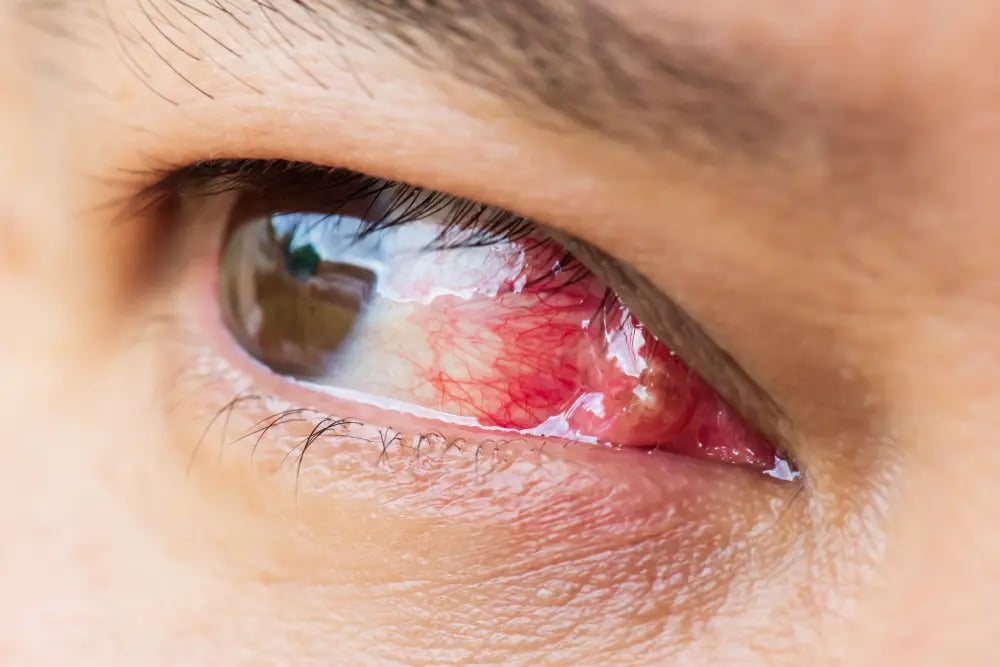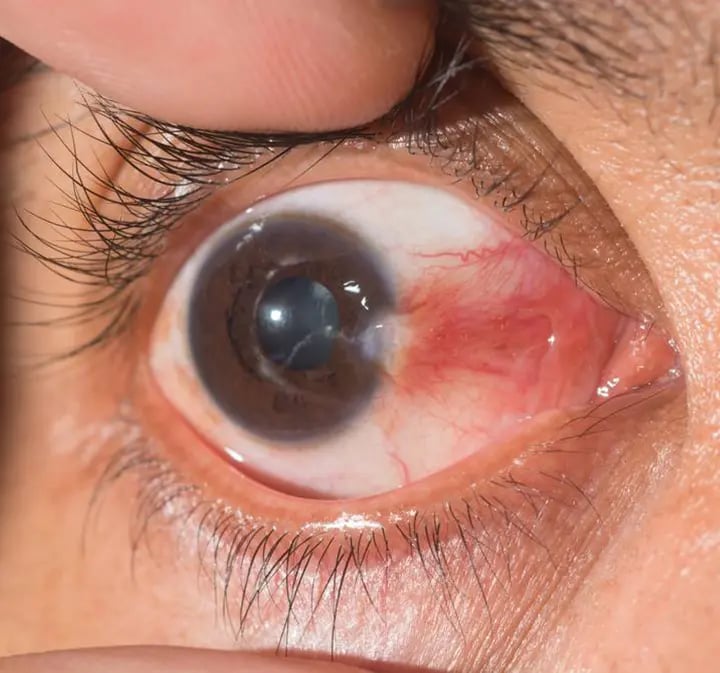Pterygium


Pterygium
When pterygium causes discomfort, or increases size excessively, until it occupies the pupil area, thus blocking sight, surgery becomes necessary. Pterygium is an abnormal growth of conjunctive tissue (known as pterygium) in the sclera (white part of the eye) and over cornea (transparent frontal part of the eye). Pterygium may affect one or both eyes, and it usually appears among people who have been exposed to sunlight and wind for long periods of time.
Symptoms include the sensation of having a foreign body in the eye, ocular pain, blurred vision, eye reddening and loss of the ability to blink normally. In serious cases, sight may be partially or totally blocked.
Treatment includes the use of eye drops and the application of a patch, to protect the eye throughout the night. If such treatments are not effective, resorting to surgery to eliminate it becomes an option. Surgery is done under local anesthesia. It is usually a fast and safe procedure. Nevertheless, there is the risk that pterygium grows back afterwards, so it is important to follow the surgeon’s instructions, and to protect the eyes from sunlight and wind after the treatment.
How to get rid of pterygium?
Treatment depends on the seriousness of the growth, and on the symptoms shown by the patient. In moderate cases, treatment may include the use of eye drops and the application of a patch to protect the eye during the night. Both may help to alleviate the symptoms, and delay pterygium’s growth. If it is more serious, or does not respond to these treatments, an option is resorting to surgery to eliminate it. This surgery is done under local anesthesia, and is usually a fast and safe procedure. The surgeon will remove the pterygium and close the injury with stitches.
It is important to follow the surgeon’s guidelines after the surgery, to assure fast and successful recovery. They may include the use of eye drops and of a patch for certain time. It is also important to protect the eyes from sunlight and wind, to prevent the pterygium from growing back.
Causes: The exact cause of pterygium is currently unknown. The most common factors which contribute to its appearance, include:
Excessive exposure to sunlight.
- Age (elderly people).
- Working outdoors.
- Excessive exposure to harsh environmental conditions such as dust, dirt, the heat, the air, dryness and smoke.
- Excessive exposure to allergenic agents, such as solvents and other industrial chemicals.
- Phases of extreme stress.
- Sleep disruption for extended periods of time.
Procedure: The surgery allows tissue resection, all blood vessels are sealed with an electrocautery. After the surgery, the patient will use an eye protector (sunglasses) and must take the medication suggested by the ophthalmologist. It is normal for the eye to redden, and to take a few weeks to recover its appearance.

 Pay your appointment
Pay your appointment

